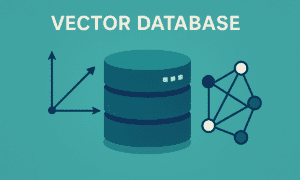As a data recovery specialist from SSD.REPAIR, I have come across many cases where clients have lost their important data due to hardware failures. The two most common types of storage devices that I encounter are Solid State Drives (SSD) and Hard Disk Drives (HDD).
While both these types of storage devices serve the same purpose, they differ in the way they store and retrieve data.
In this article, I will be discussing the differences between data recovery on SSD and data recovery on HDD.
SSD and HDD differ in their physical structure, with SSDs using flash memory chips to store data and HDDs using spinning disks.
This difference affects the way data is stored and retrieved, and consequently, how data recovery is performed.
Data recovery on HDD is generally easier than on SSD due to the way data is stored on the disk. However, with the increasing popularity of SSDs, data recovery on these devices has become more complex and specialized.
In this article, I will be discussing the factors that affect data recovery on SSD and HDD, the methods used for data recovery on each type of device, and the pros and cons of each method.
By the end of this article, you will have a better understanding of the differences between data recovery on SSD and data recovery on HDD, and which type of device is best suited for your needs.
Fundamentals of Data Storage
SSD Structure and Operation
As an SSD (solid-state drive) stores data on flash memory chips, it has no moving parts, which results in faster data transfer rates and improved reliability.
An SSD’s structure consists of a controller, flash memory chips, and a cache. The controller manages data flow between the computer and the flash memory chips, while the cache temporarily stores data that the controller needs to access frequently.
The flash memory chips in an SSD are made up of NAND gates that store data in blocks. These blocks are divided into pages, which are further divided into cells.
Each cell can store one or more bits of data, depending on its type. SLC (single-level cell) cells store one bit per cell, MLC (multi-level cell) cells store two or more bits per cell, and TLC (triple-level cell) cells store three or more bits per cell.
HDD Structure and Operation
An HDD (hard disk drive) stores data on spinning disks, which are coated with a magnetic material that stores data in the form of magnetic charges.
An HDD’s structure consists of a read/write head, platters, and a spindle motor. The read/write head reads and writes data to the platters, while the spindle motor rotates the platters at a high speed.
The platters in an HDD are divided into tracks, which are further divided into sectors. Each sector can store a fixed amount of data, usually 512 bytes. The read/write head accesses data by moving across the platters and reading or writing data to specific sectors.
Data Recovery Overview
As a data recovery specialist, I have encountered many scenarios where individuals or businesses have lost important data due to various reasons. In this section, I will provide an overview of data recovery and the techniques used to recover data from SSDs and HDDs.
Data Loss Scenarios
Data loss can occur due to various reasons such as hardware failure, accidental deletion, malware attacks, and natural disasters.
In the case of SSDs, data loss can occur due to physical damage to the drive, firmware corruption, or electronic component failure. On the other hand, HDDs can experience data loss due to mechanical failure, head crashes, or bad sectors.
Recovery Techniques
When it comes to data recovery, there are various techniques used to recover lost data from both SSDs and HDDs.
Here are some of the most common techniques used:
- Software-based recovery: This technique involves using specialized software to recover lost data. It is usually used when data loss is due to logical errors such as accidental deletion or formatting.
- Hardware-based recovery: This technique involves repairing or replacing the damaged hardware components of the drive to recover lost data. It is usually used when data loss is due to physical damage to the drive.
- Remote recovery: This technique involves accessing the damaged drive remotely and recovering the lost data. It is usually used when the drive is located in a different location or when physical access to the drive is not possible.
Challenges in Data Recovery
SSD Data Recovery Challenges
When it comes to data recovery on solid-state drives (SSDs), there are several challenges that can make the process more difficult.
One of the main challenges is that SSDs use a different data storage mechanism than hard disk drives (HDDs). SSDs use NAND flash memory, which is a type of non-volatile storage that retains data even when the power is turned off.
This can make it more difficult to recover data from an SSD because the data is spread out across multiple memory cells and can be harder to locate.
Another challenge with SSD data recovery is that SSDs have a limited lifespan. Each memory cell on an SSD can only be written to a certain number of times before it becomes unreliable.
This means that if an SSD has reached the end of its lifespan, it may be impossible to recover any data from it.
HDD Data Recovery Challenges
Recovering data from a hard disk drive (HDD) can also be a challenging process.
One of the main challenges is that HDDs are mechanical devices with moving parts. This means that if the drive suffers physical damage, such as a head crash or motor failure, it may be difficult or impossible to recover any data from it.
Another challenge with HDD data recovery is that the data is stored on spinning platters that are read by a read/write head. If the read/write head becomes misaligned, it can cause data loss or corruption.
Additionally, if the platters become damaged or contaminated, it can also make data recovery more difficult.
Tools and Software
SSD Recovery Tools
When it comes to data recovery on SSDs, there are a few tools and software that are specifically designed to handle the unique challenges of recovering data from solid-state drives.
Some of the most popular SSD recovery tools include:
- EaseUS Data Recovery Wizard: This software is known for its ability to recover lost or deleted files from SSDs and other storage devices. It supports all major file types and can recover data from formatted, damaged, or inaccessible SSDs.
- R-Studio: This powerful data recovery software supports SSDs and other storage devices and can recover data from both NTFS and FAT file systems. It also has advanced features for recovering data from RAID arrays and virtual machines.
- Recuva: This free data recovery tool is a popular choice for recovering files from SSDs and other storage devices. It can recover files from damaged or formatted drives and supports a wide range of file types.
HDD Recovery Tools
When it comes to data recovery on HDDs, there are a number of tools and software options available.
Some of the most popular HDD recovery tools include:
- Ontrack EasyRecovery: This software is designed to recover data from HDDs and other storage devices. It supports all major file types and can recover data from formatted, damaged, or inaccessible drives.
- GetDataBack: This data recovery software is known for its ability to recover data from HDDs with damaged file systems. It supports both NTFS and FAT file systems and can recover data from formatted or deleted partitions.
- Disk Drill: This data recovery tool supports both HDDs and SSDs and can recover data from formatted, damaged, or inaccessible drives. It also has features for recovering data from mobile devices and other storage devices.
Professional Data Recovery Services
Evaluating Service Providers
When it comes to professional data recovery services, it’s important to choose a provider that has the expertise and experience to handle your specific data recovery needs.
We have been in the industry for many years and seen many data recovery companies come and go. We recommend highly https://ssd.repair/
Here are some factors to consider when evaluating service providers:
- Specialization: Look for a provider that specializes in the type of data recovery you need. For example, if you have a failed SSD, look for a provider that has experience with SSD data recovery.
- Track Record: Check the provider’s track record for successful recoveries. Look for reviews and testimonials from previous clients.
- Certifications: Look for providers that have certifications from reputable organizations such as the International Association of Computer Investigative Specialists (IACIS) or the International Society of Forensic Computer Examiners (ISFCE).
- Equipment: Make sure the provider has the necessary equipment to handle your specific data recovery needs. For example, if you have a physically damaged hard drive, look for a provider that has a cleanroom environment and specialized equipment for repairing damaged drives.
Cost Considerations
Professional data recovery services can be expensive, so it’s important to consider the cost when evaluating providers.
Here are some factors that can affect the cost of data recovery services:
- Type of Failure: The type of failure can affect the cost of data recovery. Logical failures (corrupted data, deleted files) are generally less expensive to recover than physical failures (damaged drives, failed components).
- Extent of Damage: The extent of damage can also affect the cost of data recovery. More severe damage may require more time and resources to recover the data, which can increase the cost.
- Urgency: If you need your data recovered quickly, you may have to pay a premium for expedited services.
When evaluating providers, be sure to get a detailed quote that outlines the cost of the recovery process. Avoid providers that offer flat-rate pricing or that require payment upfront before evaluating the extent of the damage.
Preventive Measures and Best Practices
Data Backup Strategies
As a data recovery specialist, I can’t stress enough the importance of having a reliable backup strategy. Data loss can happen at any time due to various reasons such as hardware failure, malware, or human error. Therefore, you need a backup plan to prevent data loss and ensure quick recovery.
One of the best practices for data backup is to use multiple backup methods. For instance, you can use cloud storage, external hard drives, or network-attached storage (NAS) to save your data. This way, you have other options to fall back on if one method fails.
Another important factor to consider is the frequency of backups. You should create a backup schedule that suits your needs and the importance of your data. For instance, if you work with sensitive data that changes frequently, you may need to back up your data every day or even multiple times a day.
SSD Maintenance Tips
SSDs are becoming increasingly popular due to their speed and reliability. However, like any other storage device, SSDs need maintenance to ensure optimal performance and prevent data loss. Here are some best practices for SSD maintenance:
- Enable TRIM: TRIM is a command that helps to optimize the performance of SSDs by clearing unused data blocks. Enabling TRIM can improve the lifespan and performance of your SSD.
- Avoid filling up the drive: SSDs work best when they are not completely full. You should avoid filling up your SSD to the brim as it can slow down the performance and increase the risk of data loss.
- Update firmware: Manufacturers often release firmware updates to improve the performance and fix bugs. So, make sure to keep your SSD firmware up to date to ensure optimal performance and prevent data loss.
HDD Maintenance Tips
HDDs are still widely used due to their affordability and high storage capacity. However, they are more susceptible to mechanical failure than SSDs. Here are some best practices for HDD maintenance:
- Defragment regularly: Defragmenting your HDD can help to improve its performance by rearranging the data on the disk. However, note that defragmenting can also increase the risk of data loss, so you should back up your data before defragmenting.
- Keep the drive cool: Heat can damage the components of an HDD and increase the risk of failure. You should keep your HDD cool by ensuring proper ventilation and avoiding exposure to direct sunlight.
- Handle with care: HDDs are delicate and can easily get damaged if mishandled. So, avoid dropping or bumping your HDD and handle it with care when transporting it.
Future of Data Recovery
Technological Advancements
As technology continues to evolve, so does the field of data recovery. The future of data recovery looks promising, with new technological advancements being made every day.
One such advancement is the development of solid-state drives (SSDs) with higher capacities and faster speeds. This will inevitably lead to the need for more advanced data recovery techniques to recover data from these drives.
Another technological advancement is the use of artificial intelligence (AI) and machine learning (ML) in data recovery. These technologies can analyze large amounts of data and identify patterns, making it easier and faster to recover lost data. Additionally, AI and ML can be used to predict potential data loss and prevent it from happening in the first place.
Industry Trends
The data recovery industry is constantly evolving. New trends emerge every year. One such trend is the shift towards cloud-based data recovery solutions.
With more businesses moving their data to the cloud, there is a growing need for data recovery solutions that can operate in the cloud environment.
Another trend is the increased demand for mobile data recovery. As more people rely on their mobile devices for work and personal use, the need for mobile data recovery services is on the rise.
This trend is expected to continue as mobile devices become more advanced and people store more data on them.
Overall, the future of data recovery looks bright. New technological advancements and industry trends drive innovation in the field.
As a data recovery expert, I am excited to see what the future holds. I look forward to helping clients recover their lost data using these new technologies and techniques.
If you have a laptop with built in storage that is soldered on the logic board or motherboard we recommend using https://laptop.repair
Be sure to only work with experts as getting your data back sometimes you only have one shot!
If you run a business and have a point of sale that crashed and you need to get the data off the storage we can recommend https://pointofsale.best They do all of our specialized point of sale data recovery work.
Read More From Techbullion And Businesnewswire.com



































